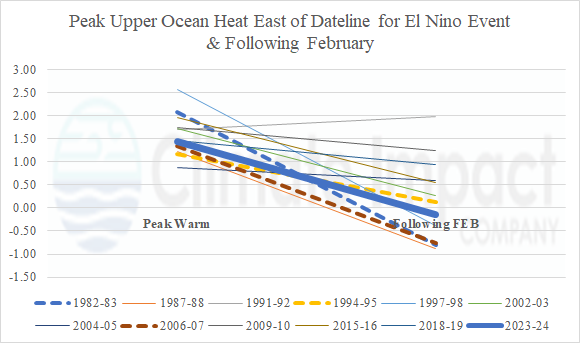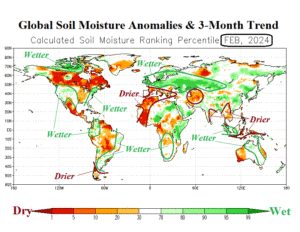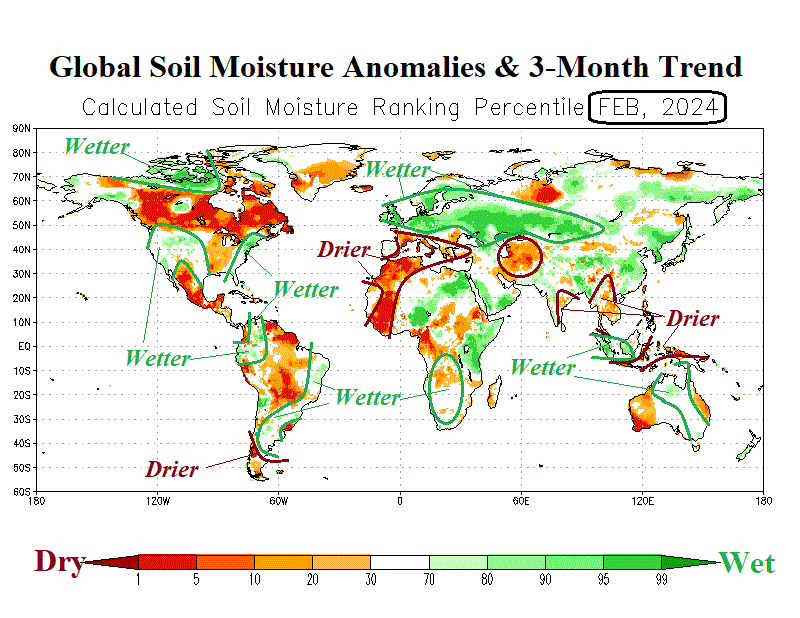
March 2024 Marine Heatwave/ENSO Discussion and Outlook
03/13/2024, 3:49 am EDT
Transient MJO Causal to Wetter Brazil/Australia/U.S. Midwest Pattern Ahead
03/17/2024, 7:11 am EDTHighlight: Watching Midwest U.S. drought potential; Western Europe wet pattern flips drier.

Fig. 1: The February 2024 global soil moisture anomalies and 3-month trend.
Observation discussion: During meteorological winter, the northern hemisphere received mostly a wetter soil moisture signature largely due to the influence of El Nino. In the U.S., most of the western half of the U.S. observed a wet soil moisture trend (Fig. 1). Similarly, the U.S. East Coast trend was wetter particularly in the Northeast Corridor. The drier tendency in the Midwest continued. Western Europe to Kazakhstan was dramatically wetter. The Ivory Coast, Northwest Africa, and the South Europe Coast trend was dry, and drought is in-place for many of those areas. Southeast Asia shifted sharply drier. In the southern hemisphere, meteorological summer brought a wetter regime to the eastern South America continent including much of Argentina. Drought across the western half of Brazil remained intact. South Africa recently observed a wetter trend. Indonesia received a split decision…wetter western areas and dry across east region. In Australia, strong drought normally associated with El Nino did not develop. A wet soil regime was observed from the North Coast to Southeast Australia.

Fig. 2: The February 2024 global soil moisture anomalies and 3-month trend.
Forecast discussion: All eyes are on the Midwest U.S. where, in general, dryness is favored during meteorological spring causing drought conditions to worsen (Fig. 2). Rainfall is nearby as the southeast quadrant of the U.S. receives a wet spring. Dryness across Mexico strengthens while expanding into Texas. The Northwest U.S. is likely to receive a drier pattern. In South America, dryness regains strength across Brazil and Chile. Northwest continent plus Uruguay and vicinity shift wetter. Western Europe is likely to turn drier. Wet climate erases drought across Iran and Iraq. In South Africa, a dry climate regenerates increasing risk of returning drought while east tropical Africa stays wet. Southeast Asia dryness continues through the next several months while most of Indonesia turns wet. In Australia, the North Coast is likely drier than normal.
![Climate-Impact-Company-logo-sm[1]](https://climateimpactcompany.com/wp-content/uploads/2023/08/Climate-Impact-Company-logo-sm1.png)
